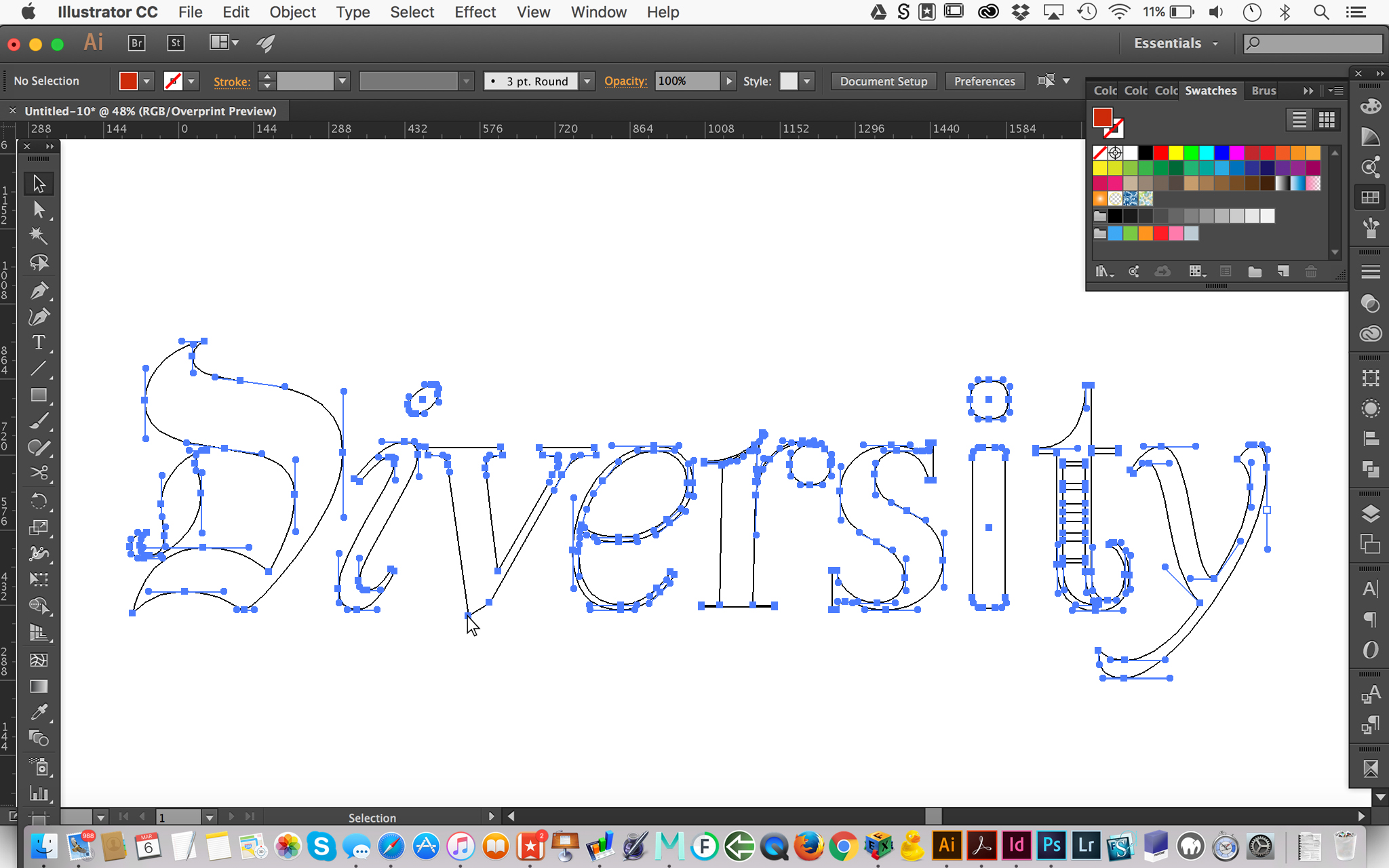Your cart is currently empty!

How do I visualize an idea with letters?
Part 1
This is part one of a five part series. I will be going through how I interpret certain values using various letterforms. In this first week, I’m sharing the process I use to visualize a certain idea through letterforms. This week is just the abstract. The following four weeks will go through four specific examples:
- Community
- Integrity
- Kindness
- Joy
Convey ideas through association
Letters are abstract symbols. What is this symbol an abstraction of? In the case of letters, they are agreed upon representations of certain sounds. Letters don’t actually look anything like the sounds they represent, but they have associations with the sound in our minds.
Evoking a mood or an idea with abstract symbols involves association. Which association depends not only on the letter, but the way the letter is written or drawn. Different type styles make me think of different things. The only reason it might make me think or feel a certain way is because I have come to associate a certain letter style with a certain thought or feeling.
What do I associate with the idea?
Some ways a letter style makes me feel are because of personal interactions. These associations may not be true for all people, they just happen to be true for me. I may associate a certain type style with candy because it was used in the signage of a local candy store growing up. That may only be true for me, but it could be true for more people. The candy shop may have chosen that letter style because other candy shops have too. Or perhaps it was chosen because there were other associations with candy the sign maker had in mind.
While personal feelings about certain type styles may not be universal, they are a good starting point.
What are some historical associations with the idea?
The next best place to look is historical association. When I am trying to connect an idea with a visual, I first see what real world examples of that idea come to mind. Are there people or events or places or times in history associated with this idea? What letter styles surrounded them? What letter styles were popular during a certain time period associated with the idea? What fonts were being used in literature about the idea? What letters on posters or play bills advertised cultural productions around the idea? What kind of type was used in propaganda to spread this idea?
History is the strongest place to find widely shared type idea associations. We have a shared history as humanity. But remember, there are specific cultural, national, and local histories as well. The same type style may have been used in service of different ideas in different places at different times. So a fraktur blackletter may mean a very different thing to someone from Mexico than it does to someone from Poland.
If history is limiting based on culture, time and geography, then what other associations may have a broader reach?
What kind of features communicate the idea?
The shape and structure of letters can evoke physical properties. For instance, letters with very thin and detailed features may be described as delicate, wispy, fragile, fine, or luxurious. Letters with rounded forms, which if real and three dimensional would not have any sharp edges, might be described as soft, smooth, or—stretching into anthropomorphism—gentle or friendly.
We naturally seek out our own human attributes in other objects. People anthropomorphize animals and inanimate objects all the time. The same is true to a degree with letter forms. Letters have been described as playful, menacing, and even trustworthy.
If I imagine human attributes in my letter forms, then I can manipulate those forms to reflect a certain mood based on human body language.
If we consider the general shape of letterforms in comparison to body types, we can make associations there too. For instance, thick, bold, and/or square-ish forms tend to be described as masculine, while lighter and/or curvier forms tend to be described as feminine. These of course are blunt instruments based on random social constructs which can shift based on context and culture. One person’s feminine is another person’s gentlemanly. One person’s masculine is another person’s matronly.
Even interactions between letterforms can be anthropomorphized. Letterforms are said to “stand like soldiers in a row,” or “playfully dance along the baseline.”
Pareidolia is a thing our brains do to find meaning in something that may otherwise be meaningless. (It’s what makes us so good at finding patterns and solving problems.) It commonly manifests as a tendency to see faces in things, and this can extend to letterforms as well. Consider an uppercase I with bilateral serifs on the top and bottom. The upper serifs are like eyebrows, and the lower serifs like a mouth. If I draw them both arcing down, the I looks sad. If I draw the top arching up and the bottom arching down, it looks angry. If I draw it with both sets curving upward, it looks happy.
How would I write while feeling or embodying the idea?
The last way I consider associations with letter styles is in how they are written. I imagine how I would write or draw the letters if I were to embody the idea I’m considering. How would this idea change the way I write? Would it change the tool I choose to use? Would it change the force or steadiness with which I wrote?
These kinds of questions lead to subtle changes in detail. But the subtle details make a difference in what the letters communicate visually.
* * *
In the next post I’ll start into specific examples of how to communicate a certain idea with letter forms, beginning with the idea of Community.
(Updated 09/06/2023)

Leave a Reply